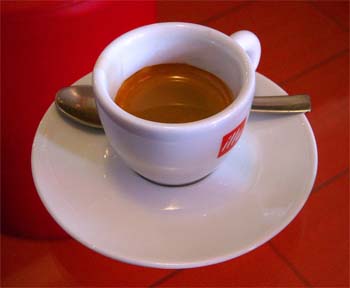Espresso (/ɛˈsprɛsoʊ/ ⓘ, Italian: [eˈsprɛsso]) is a concentrated form of coffee produced by forcing hot water under high pressure through finely-ground coffee beans. Originating in Italy, espresso has become one of the most popular coffee-brewing methods worldwide. It is characterized by its small serving size, typically 25–30 ml, and its distinctive layers: a dark body topped with a lighter-colored foam called crema.
Espresso machines use pressure to extract a highly concentrated coffee with a complex flavor profile in a short time, usually 25–30 seconds. The result is a beverage with a higher concentration of suspended and dissolved solids than regular drip coffee, giving espresso its characteristic body and intensity.
Espresso serves as the base for numerous popular coffee drinks, including cappuccino, latte, and americano. It can be made with various types of coffee beans and roast levels, allowing for a wide range of flavors and strengths. The quality of an espresso is influenced by factors such as the grind size, water temperature, pressure, and the barista's skill in tamping the coffee grounds.
While espresso contains more caffeine per unit volume than most coffee beverages, its typical serving size results in less caffeine per serving compared to larger drinks such as drip coffee. The cultural significance of espresso extends beyond its consumption, playing a central role in coffee shop culture and the third-wave coffee movement, which emphasizes artisanal production and high-quality beans.
